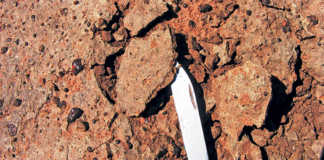
A commercial cattleman is also in the business of breeding animals, says SA Stud Book’s Dr Japie van der Westhuizen. The stud bulls in a commercial herd have to be replaced from time to time, while old and poor cows must be culled. A cattleman should never cull an animal from a herd without a clear goal, says Van der Westhuizen, as he continually has to make breeding decisions, especially if there are two breeding seasons a year.
When considering which stud bull to buy, the selection criteria needed to meet the breeding objectives of a commercial beef herd are vital, as the bull’s impact will be extremely high in the herd. He will supply half of his offspring’s genes and these will influence the herd for generations to come. This is so even if more of a specific bull’s offspring are culled from a herd than those of other bulls. “The first bull’s genetics will not have been eradicated,” says Van der Westhuizen.
Knowing which criteria or minimum requirements are important when deciding which cows to cull is equally important, as there are several traits that can only be measured on a female, such as female fertility or maternal ability. In short, breeding objectives must seek to improve the herd genetically. A farmer should know what he wants to achieve by buying a specific bull, or culling certain cows. Only then can he start investigating how the addition (through the bull) or removal (through culling) of breed characteristics will help him to achieve his breeding objectives.
Advice to cattlemen
Take the following into consideration:
- Production conditions: These include the environmental and financial impacts, market needs, resource availability, financial and other risks, and payment constraints of your commercial beef production enterprise.
- Breeds: “In South Africa there are around 30 beef breeds, giving commercial cattlemen a wide choice. Each breed has types and even variations within these types that can drive a commercial beef producer’s choices,” says Van der Westhuizen.
- Functionality: How do the animals fit the production constraints of your enterprise? For example, how well will they tolerate high humidity or low temperatures, challenging terrain, or sourveld, sweetveld or mixed veld? The breed or breed type must be suitable for these conditions.
- Maturity: In certain cases, maturity type can affect the price obtained. What type of animal is a feedlot looking for? Do you want to market long weaners or oxen? How much growth do you want in the marketable weaners without introducing genetics that might sacrifice maternal ability in the breeding cows?
- Breeding system: Does your enterprise have a straight- or cross-breeding system? This is an important consideration when selecting genetics for your commercial beef herd.
“In a straight breeding system, a commercial beef producer gets replacement heifers from the bulls,” explains Van der Westhuizen. “In this case, the maternal abilities of the replacement heifers will be more important than in certain cases where the type of sire is used that produces progeny that are all sold off. The adaptability of the breeding stock, both within breed and also across breeds, must be considered during the genetic selection process.”
Generational interval
For beef cattle, this can often be longer than five years – the average age of a reproductive animal in a commercial beef herd. This means that the genetic changes you are seeking to introduce will be seen in only five years. “So, be wise when setting breeding goals and then making the genetic selection to achieve these,” stresses Van der Westhuizen. A commercial cattleman cannot set breeding goals based only on market trends and payment systems. The first aspect that should be considered is the biological efficiency of each production animal, says Van der Westhuizen. This is where appropriate genotype selection is vital.
This topic will be discussed next week.
Contact Dr Japie van der Westhuizen at 082 332 9923 or [email protected]. Visit www.studbook.co.za.













